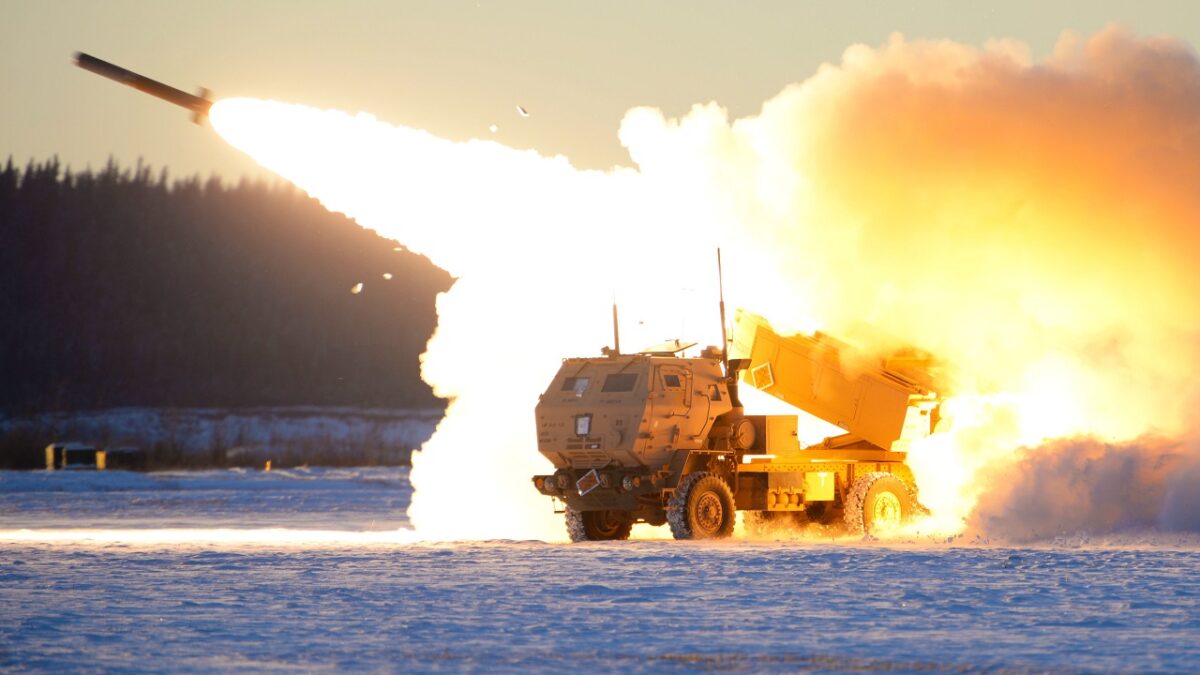In recent months, Russian forces have increasingly focused their efforts on taking out U.S.-supplied HIMARS rocket systems in Ukraine.
The Western rocket launchers have proven essential to Ukraine’s defense, allowing its troops to push back invading forces in the southeast, take out supply bridges over the Dnieper River, and destroy a multitude of Russian ammunition depots. The missile systems were also used in offenses in Russian-occupied Crimea, and have destroyed more than 100 “high value” Russian targets in recent months. The weapons systems have even contributed significantly to Ukraine’s ability to launch a major counter-offensive in Kherson on Monday.
As Russia fights back – despite having nothing equivalent to the advanced long-range rocket systems – Ukrainian forces have resorted to creative tactics to prevent further HIMARS losses.
Decoy HIMARS Rockets
According to a report by The Washington Post on Tuesday, Ukraine is using wooden decoys designed to look like HIMARS missile launchers to trick Russian forces into wasting their missiles on them. The decors are designed to look enough like the rocket systems from the view of Russian drones.
Once located, the Russian drones send the location back to Russia’s cruise missile carriers stationed in the Black Sea. As Ukrainian troops stay clear of the decoy rockets, Russian forces waste valuable missile on striking those targets while the real HIMARS are hidden away and being used in combat elsewhere.
The information was gathered from interviews with senior United State and Ukrainian officials, and the outlet even claimed to have seen photographs of the wooden decoys.
One senior Ukrainian official told the outlet that within the first few weeks of implementing the strategy, Russian forces wasted more than 10 Kalibr cruise missiles on taking out the decoy missile launchers. As a result, Ukrainian forces have constructed more of the decoys and will continue to use them for as long as the strategy works.

A U.S. Army M142 High Mobility Artillery Rocket Systems (HIMARS) launches ordnance during RED FLAG-Alaska 21-1 at Fort Greely, Alaska, Oct. 22, 2020. This exercise focuses on rapid infiltration and exfiltration to minimize the chance of a counterattack. (U.S. Air Force photo by Senior Airman Beaux Hebert)
The news could, however, prompt Russia to adopt a new approach – whether that’s flying drones closer to the targets to get a better look or refraining from striking Ukrainian positions until they have more information. The latter, of course, could prove beneficial to Ukrainian forces as they launch a fresh offensive to reclaim Kherson and other occupied regions in the southeast.
According to the report, Russia spent weeks completely unaware that the HIMARS systems their cruise missiles were destroying were decoys – suggesting that recent reports of Russian forces taking out the valuable rocket systems could have been wrong.
Jack Buckby is a British author, counter-extremism researcher, and journalist based in New York. Reporting on the U.K., Europe, and the U.S., he works to analyze and understand left-wing and right-wing radicalization, and reports on Western governments’ approaches to the pressing issues of today. His books and research papers explore these themes and propose pragmatic solutions to our increasingly polarized society.

